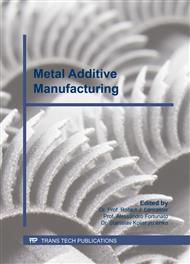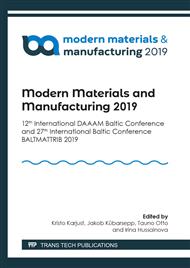p.246
p.252
p.257
p.263
p.270
p.276
p.282
p.288
p.294
Electron and Laser Beam Additive Manufacturing with Wire - Comparison of Processes
Abstract:
Electron beam (EBAM) and laser beam (LBAM) additive manufacturing processes with a deposited material in the form of a wire are an efficient methods enabling the making of component parts. The scope of the presented work was to investigate the influence of technological process on microstructure and mechanical properties such as tensile strength, microhardness and elongation of the fabricated components. The achieved results and gained knowledge will enable the production of a whole structure from stainless steel in the future. The metallographic examination revealed that the microstructure is not fully homogenies, the cell-dendritic areas occurred. Moreover, the microhardness profiles indicated that some fluctuation in the microstructure as well as mechanical properties can be observed on the cross section of deposited components. However, the mechanical tests showed that the tensile strength as well as elongation fulfil the requirement of producer of deposited wire.
Info:
Periodical:
Pages:
294-299
Citation:
Online since:
April 2019
Keywords:
Price:
Сopyright:
© 2019 Trans Tech Publications Ltd. All Rights Reserved
Share:
Citation:



